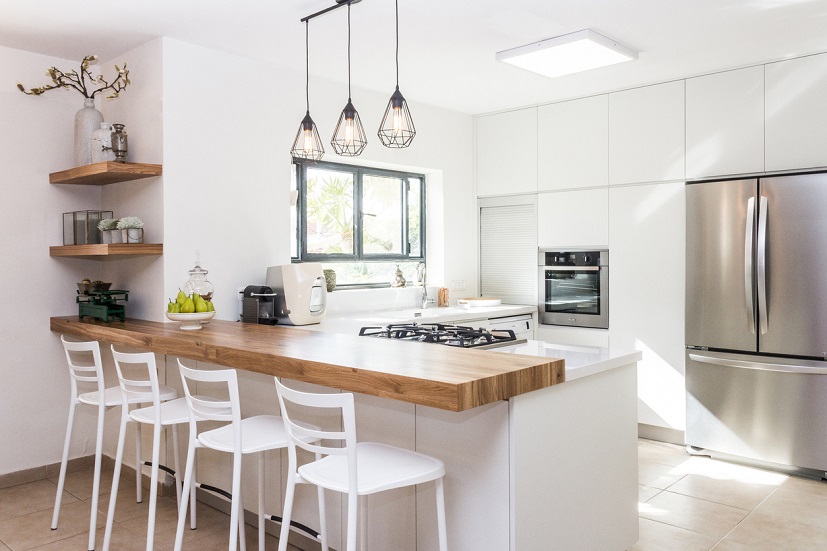From Graduation to Retirement: A Financial Planning Guide for Young Singaporeans (2025)
In this article
In your 20s, financial planning doesn’t carry the same urgency and excitement as planning your next holiday. However, you need personal finance skills to live the life you want in Singapore. Whether it’s travelling overseas, proposing to your partner, or paying a down payment on a flat, all these milestones require you to plan ahead and manage your money well.
By taking control and starting your personal financial planning now, you can seize every opportunity that life has to offer. Here are the 6 major milestones to look forward to between graduation and retirement, and what you can do to prepare yourself financially.
Milestone 1: Your first job and first salary
Congratulations on getting your first job after graduating! You’re in a good place to start enjoying life. However, resist the temptation to spend your entire salary now, and take a minute to think about what you’d like to be able to do over the next few years.
Being employed is just the first step to financial security. You need to start saving and managing your wealth in order to make your salary work for you. Even if your starting pay isn’t what you hoped for, you can still build good money habits that will form the foundations of a secure, stable future. Living through a pandemic has also taught us that, on top of planning ahead, we need to be prepared for whatever life throws our way.
Here are some things you should start doing now:
Get started with retirement planning
Yes, you’re reading this right - the best time to start planning for retirement is the day you get your first pay. It is normal to feel the rush of freedom and the possibilities this new purchasing power has given you. Understandably, planning your finances might not be top of mind. That doesn’t make it any less impactful on your future.
At this age, one of your most valuable resources is time. It’s easier to save a sizable sum for retirement if you start now, as opposed to when you start in your 30s or 40s. When you place your savings in an account where the money is invested or generating interest, you have 40 years to maximise the power of compounding interest and reap big rewards. Don’t miss out on this opportunity to get a head start on your retirement savings.
You might be wondering, “I’m already paying for CPF, why is there a need to save more for retirement?”
While your CPF Ordinary Account (OA) savings will help fund your retirement, you may want to use part of this to pay for your first flat. The more you use for property, the less you’ll have for retirement. Supplement your CPF savings with a separate retirement account so you have enough for both a flat and for your golden years.
Build your retirement funds with a flexible plan like Gro Retire Flex Pro II. Receive monthly cash payouts1 during your retirement, providing an illustrated total yield at maturity of up to 4.08% p.a2,3. You can choose your premium payment terms and payout period to suit your budget and retirement needs. You may even choose to adjust when your cash payouts1 begin by up to 5 years4,5 if you decide to retire earlier or later.
Use an insurance savings plan for short-and mid-term goals
Now that you’ve settled your retirement, think about what you’d like to achieve in the next 2-5 years. Would you like to spend some time travelling the world? Start your own business? Get a Master’s degree? You may want to save a portion of your salary to start funding these dreams. Now is the best time to do so while you don’t have a mortgage or children to support.
Consider using a regular insurance savings plan like Gro Cash Flex Pro to build the discipline of saving for mid-term goals. This plan lets you choose your policy and premium term, depending on your financial ability. Gro Cash Flex Pro gives you yearly cash payouts6 from the end of the 2nd policy year. You also have the option to spend your cash payouts or accumulate with us to receive interest at a rate of up to 3.00% p.a.7
Travel and see the world
Your 20s are the best time to explore the world beyond our little island. With international borders gradually opening, now is the perfect time to start planning. Once you’ve put aside a budget, make travel plans and bookings, the next step is to protect yourself with travel insurance.
Travel insurance might seem like an additional expense, and you might wonder if it’s really necessary - especially if your previous trips have always gone as planned. However, with COVID-19 adding an additional element of unpredictability, we say, better safe than sorry.
Besides helping you replace lost personal belongings, travel insurance can help you get emergency medical treatment or evacuation, even providing you coverage for COVID-19. In case your trip gets delayed, cancelled, or postponed a travel policy can also help you recover out-of-pocket expenses from cancelled bookings or delayed flights.
Travel insurance is best bought early, right after booking flights and accommodations. By having a travel policy covering you from the start, you can recover costs in case unforeseen events force you to cancel or delay your trip.
If you are travelling close to home, such as destinations like Malaysia, Bintan or Batam, you may choose to opt for FlexiTravel Plus Insurance, which allows you to buy travel insurance coverage by the hour, making it affordable and wallet-friendly.
Read more: When does a travel policy cover trip cancellations, delays, or postponements?
Milestone 2: Buying your first home
Whether it’s a flat from the HDB or a condo from a private developer, buying property in Singapore is the single most expensive purchase you’ll make. From 21 years old, you are eligible to buy a build-to-order flat (BTO) with your partner, private property, or a resale HDB flat if you’re part of a family nucleus. If you are single, the minimum age to buy an HDB resale flat is 35. Regardless, with the right information and careful planning, you can decide when will be the best time to begin this new stage of your life.
Flat prices vary depending on the type of property and where it’s located. Although property prices are slowly trending upward, you can look at today’s rates to see how much it will cost to live in an estate you like. From here, you can decide what type of flat you can afford and how much you should start saving.
Choose a flat you can comfortably afford
As a rule of thumb, you should spend no more than 30% of your gross monthly income on housing. This amount includes mortgage payments, as well as utilities, maintenance, property tax, and home insurance.
You might find this to be an enormous amount, but even if you earn enough to afford your prospective mortgage, remember that you need to save enough money for a down payment too. Other costs associated with home ownership can easily add several hundreds to your living expenses.
Ultimately, the 30% recommendation is a rough guideline that will give you an idea of what flat you can afford. There are always exceptions to this rule. For instance, if you still have student loans to pay, you might have a smaller housing budget than someone who does not have outstanding loans.
Use this percentage as a starting point and adjust accordingly based on your lifestyle and financial situation.
Start saving for the down payment now
Whether you’re single or engaged, start saving for your flat’s down payment the moment you decide you want your own property. The down payment amount depends on what property you buy, and where you get your loan.
If you’re buying an HDB flat and are using an HDB loan to pay for it, you need to pay 10% down payment, all of which can be paid for in cash, using housing grants, or using your CPF OA savings. Bank loans, on the other hand, will require a 25% down payment. You can use your CPF OA savings or housing grants to fund 20% of the down payment, but 5% must be paid in cash.
Keeping in mind that your CPF savings are meant for your retirement, you might want to try leaving your CPF savings for retirement and pay for the flat’s down payment in cash.
How much should you save monthly for the down payment?
A 10% down payment on a $315,000 HDB flat amounts to $31,500. If you start saving in an account that earns 2% p.a., you need to save $237 a month to accumulate the down payment in 10 years. If you want your flat in 5 years’ time, you’ll have to save around $499 a month.
An insurance savings plan like Gro Power Saver Pro makes it easier to save for a down payment while meeting other financial goals. This 12-year plan requires you to pay premiums for only the first 3 policy years. For the remaining 9 years, you can stop paying premiums, and start saving for something else.
Milestone 3: Planning your wedding and getting married
You’ve met someone special who has everything you want in a life partner. Before you pop the question or before you say “yes”, it’s worth asking if you can afford the cost of an engagement ring, the cost of a wedding, and married life together.
Getting legally married in Singapore actually costs less than a buffet lunch for one. If you have your marriage solemnization at the Registry of Marriage (ROM), you only need to pay only $42 (assuming you’re both Singaporean citizens and/or Permanent Residents). Alternatively, you can choose to have your solemnization at a venue outside the ROM, such as a church or hotel. This can set you back several thousand dollars, depending on the location.
According to The Wedding Vow, the average cost of a Singapore wedding ranges from $30,000 to $50,000, and can even go up to $100,000. The costs vary depending on where you hold the banquet, who you hire to photograph the wedding, and how elaborate you want your rings, clothes, and decor to be. Although recent restrictions do put limits on how big your wedding celebration can be, you might want to plan ahead for when the situation goes back to normal and restrictions are removed.
You and your partner should take the time to discuss what’s important to have at the wedding, and how much you can comfortably afford to spend. While wedding angbaos can help offset your expenses, don’t use potential angbao earnings as the basis for your budget. Remember, you have other expenses to plan for as you begin your life together!
Start saving for your wedding once you settle your flat
Before you even discuss the wedding, make a plan for where to live after you’re married. At this point, you and your partner can begin the BTO application process, under the “Fiancé/Fiancée” Scheme. It takes around 4-6 years for BTO flats to get built, which gives you enough time to save for your wedding and get legally married.
Once your flat is settled, start putting some cash aside each month for your wedding.
Milestone 4: Pregnancy and birth of your first child
After enjoying married life for a few years, you and your spouse might start thinking about starting a family. Or perhaps you’re newly pregnant and eagerly waiting for the arrival of your first child.
Welcoming a child is a major financial and personal commitment that requires you to rethink your priorities. The sooner you start preparing for your child’s arrival, the easier it will be to provide your firstborn with the best you can give.
Start by focusing on two major expenditures: maternity costs and delivery fees. Once you have this settled, you can begin making financial preparations for your child’s early years.
Save at least $845 for maternity costs
Maternity costs cover all the medical checkups you or your spouse will need throughout the pregnancy, and other costs leading up to childbirth. How much you will pay depends on where you get your medical appointments done.
One way to save money is to purchase antenatal packages that cover all gynaecologist’s consultation fees throughout pregnancy. You can buy these from public hospitals (expect to spend upwards of $800 for Singaporean Citizens and Permanent Residents) or private gynaecologists (typically more expensive).
Remember that antenatal packages only cover consultation fees and may not include specialised tests. Make sure to set aside extra cash in case any complications arise during the pregnancy.
The good news is that you can defray some of these costs with the Medisave Maternity Package. You can withdraw up to $900 for any pre-delivery medical expenses.
Prepare at least $5,635 for childbirth costs
Delivery costs will make up most of the maternity expenses. Like the antenatal package, delivery package costs in Singapore vary according to hospital type and ward. You can expect to pay at least $5,635 to stay in a Class A ward in government hospitals. If you prefer a private hospital, it would be better to compare the varying costs and decide for yourself which would be the best choice for you.
You can defray some delivery costs using the Medisave Maternity Package. The withdrawal limits are between $750 - $2,600 for delivery expenses, depending on the type of procedure. You can also withdraw $550 per day for the first two days of admission and $400 per day from the third day onwards for your hospital stay during the delivery.
Have a financially healthy pregnancy with maternity insurance
Pregnancy complications and congenital illnesses don’t happen often. But if they do, you or your child might need to stay at the hospital for longer or require expensive medical treatment. Stay financially protected with a maternity insurance plan like Income’s Maternity 360.
From the 13th week of your pregnancy onwards, Maternity 360 can provide extensive financial protection in case pregnancy complications occur, or your child gets diagnosed with a congenital illness8. Maternity 360 also provides daily hospital care benefits and even gives a payout in case your child needs phototherapy treatment9 due to severe neonatal jaundice.
Protect your young family’s financial future with life insurance
Your child is going to depend on you for roughly the next 25 years. The moment you decide to have children or learn about your pregnancy, you or your spouse should get life insurance coverage.
We’d like to think that we’ll always be around to care for our children, but so many things can happen that might prevent us from doing so. This is where life insurance becomes particularly useful. In case of death or permanent disability, life insurance gives your spouse and kids the financial means to meet their living expenses.
Complete Life Secure is designed to provide lifelong coverage while accumulating cash value over time. It offers the flexibility to choose a Multiplier Cover10,11 of up to 500% of the sum assured till the age of 65, 75, or 80, covering death, terminal illness, and total and permanent disability. With Flexi Cash Access12, you can choose to receive annual cash payouts for an extra boosts to help with whatever comes your way by converting a portion of your Complete Life Secure policy's sum assured from age 50. You have the flexibility to choose your payout duration from as short as 10 years to the age of 100.
Adapt your coverage to match life’s big moments with the option to buy another life policy13 and increase coverage for death and total permanent disability without a health assessment upon reaching these major milestones in life: adulthood (turning 21), marriage, divorce, parenthood, death of a spouse, or residential property purchase.
You can also enhance your protection with supplementary riders like Early Critical Secure rider14 and Advanced Critical Secure rider15, which covers up to 159 conditions, including early, intermediate and
advanced stage dread diseases14,15,16. With these features, Complete Life Secure ensures you and your loved ones are prepared for whatever life may bring.
Milestone 5: Childcare and education
Once pregnancy and delivery costs are settled, it’s time to look to the future and start preparing for the costs of raising a child. Before your or your wife’s maternity leave ends, make sure you’ve evaluated which childcare option is best for your family. Your next priority is to get a head start with your child’s university fund – one of the biggest expenses you’ll have as a parent.
Choose the right childcare option
Before going back to work, start having a think about what childcare options will work for your family. From asking for a flexible working arrangement to hiring a babysitter, there’s a spectrum of childcare options that suit different preferences. You can pay anywhere from nothing to more than $2,000 a month, depending on what childcare arrangement you choose.
Regardless of which childcare you have chosen, an increased interaction with people beyond your household means that there is a chance for your child to become exposed to various diseases, such as Hand Food Mouth Disease (HFMD). This is why it’s important to have the necessary insurance plans in place before these instances occur. Personal Accident plans such as PA Secure covers medical expenses for 7 infectious diseases including HFMD.It also comes with child and student care expenses optional benefit which reimburses child care fees if your child is hospitalised or on certified medical leave due to an injury or infectious disease.
Start your child’s university fund
The good news is the cost of education in Singapore is very affordable for Singaporeans and Permanent Residents. At least, for the primary and secondary education level. You’ll probably end up paying more for extracurricular activities that develop their non-academic talents, and perhaps tuition if your child needs extra support.
University fees, on the other hand, are rising every year. Annual fees at the National University of Singapore (NUS) range from $30,331 to $168,308. Even with the MOE Tuition Grant Subsidy, you can expect to pay at least $8,250 annually. Sending your child to study overseas will cost significantly more. Universities in Australia or the UK charge at least $33,000 annually - and that doesn’t include living expenses or miscellaneous fees. It’s a difficult decision if it comes to choosing between your retirement savings or your child’s education. But planning early can alleviate the stress of such a critical point in your child’s life. Whichever you choose, you’ll be thankful that you prepared for it ahead of time.
Don’t wait until your child reaches school-age to start building their education fund. Saving early and regularly gives you more time to reach your target amount, thanks to compounding interest.
Use a plan like Gro Cash Flex Pro to live spontaneously as you save to secure your child’s future.
Milestone 6: Planning your retirement
By now, you probably understand the wisdom of beginning your retirement savings in your 20s. Over the last couple of years, new goals and short-term financial needs have taken priority, pushing retirement planning further down the list.
Eventually, you’ll come to realize the need to reprioritize your retirement savings. Many working Singaporeans between the ages 35 and 55 see themselves as part of the sandwich generation - the generation who feels the double financial pressure of raising children and supporting ageing parents.
Because of these twin demands, nearly 60% of today’s sandwich generation are unable to top up their retirement savings. This means that the next generation of young Singaporeans could be in the similar position of being sandwiched between caring for the old and young generation.
To break the cycle, start saving for retirement now, even if you’re still in your 20s. By creating the means to support yourself, you relieve your children of the financial burden of caring for you in your old age. Starting your retirement savings early gives you another advantage: you’re buying time for your savings to grow while meeting other milestones that come your way.
How much will you need to retire?
Singapore’s official retirement age is 63, and your company must be able to offer re-employment if you want to keep working for them until the age of 68. This means that you’ll likely be earning a full-time income until you are 63.
Now, consider the average life expectancy of Singaporeans. According to Singstat, women can expect to live to the age of 85.2 while men can expect to live to the age of 80.7. Remember that at some point, roughly around the age of 73, your health will start declining and you may need specialised care or medical procedures.
To understand how much you need to retire, you need to save approximately 25 years’ worth of living expenses. For a very basic retirement lifestyle, $1,200 a month may be enough, assuming you stay in your own flat and your mortgage is paid for. If you’d like to spend your golden years travelling or becoming an entrepreneur, you may need more to support yourself.
Use Income’s Retirement Calculator to help you determine how much you’ll need for your golden years, based on your expected monthly expenses. It’s very easy to use, and it will show you exactly how much you need to start saving each month. If you would like to seek more personalised professional advice,
Start boosting your retirement savings
Now that you have this figure, take a minute to compare how much you’ve saved (remember that retirement plan we talked about earlier?) versus how much you’ll need, and see whether you’re on track to meet your goals. If you had purchased a plan when you started working, by the time you reach your 40s, you should already have a good sum accumulated.
Even if you hadn’t gotten a retirement plan earlier or you’re falling behind on your retirement goal, your 40s are a good time to catch up. You’re likely at your peak earning years, and two more decades away from retirement age. You can still meet your goals if you make an effort to save a bigger chunk of your income.
Look into what else you can add to your retirement portfolio to help you meet your goals. You can do research on your own, or consult a financial planner for help. Here are some things to consider.
CPF LIFE
If you haven’t done so yet, enrol for CPF LIFE, a low-risk annuity scheme that gives you a monthly payout for as long as you live. This means that you won’t have to worry about running out of CPF savings if you live up until your mid-80s and beyond.
Even though payouts will be provided throughout your golden years, the amount will probably not be enough to fund all of your retirement expenses. CPF LIFE is best used in the context of a well-rounded retirement portfolio.
To figure out how much more you need in addition to CPF LIFE payouts, look at the payouts you’ll receive and compare it against the monthly expenses you expect to have in retirement.
Supplementary Retirement Scheme (SRS)
Besides your CPF savings, you can use the SRS to boost your retirement savings. Simply open an SRS account with DBS, UOB, or OCBC, then transfer up to $15,300 per year to your account. Once your money is in your SRS account, you can use it to make certain investments like Singapore Savings Bonds, investment-linked plans (ILPs), unit trusts, and even blue-chip shares and index funds.
Whatever amount you put into your SRS account, make sure that you won’t miss it until you retire. Otherwise, you’ll need to pay a hefty 5% withdrawal fee for getting the money before age 63.
What do you want to achieve in life?
Planning your next holiday or your dream wedding can be a lot more exciting and glamorous than planning your finances. While there’s nothing wrong with wanting these things, the only way to get the lifestyle you want is by being smart about your money. With proper financial planning, you can make these dreams a reality.
Of course, your milestones might be different from those we shared here. Perhaps you want to start a charity or retire much earlier than the norm. No matter what you dream of doing with your life, list them out, along with the resources you’ll need to bring these plans to life. Knowing what you need will help you plan your next move. If you need expert advice on how to use your income to meet your goals, our friendly financial advisors are here to give you guidance on your unique financial situation.
1 The cash payout consists of a monthly cash benefit and a non-guaranteed cash bonus.
2 This is for illustration purposes only. The total yield at maturity is not guaranteed and is based on the assumption that the Life Participating Fund earns a long-term average return of 4.25% per annum for a male non-smoker, aged 40, who chooses a retirement age of 70, a payout period of 20 years and pays a single premium. It is also based on the assumption that all cash benefits and non-guaranteed cash bonuses due for the entire policy term are paid out to the policyholder. Based on the illustrated investment rate of 3.00% per annum, the total yield at maturity will be up to 2.97% per annum.
3 The figures in the illustration are not guaranteed and are illustrated based on the assumption that the Life Participating Fund earns a long-term average return of 4.25% per annum in the future. Returns are illustrated based on estimated bonus rates that are not guaranteed. The actual benefit payable will vary according to the future performance of the Life Participating Fund. The calculation for the illustrated total yield at maturity also assumes that all cash benefits and non-guaranteed cash bonuses due for the entire policy term are paid out to the policyholder.
4 The policyholder may choose to shorten or extend the accumulation period, by up to 5 years, in multiples of 1 year.
The request to exercise this option must be made on a date:
a) At least 2 years after the policy entry date; and
b) At least 2 years before the end of your original or revised accumulation period, whichever is earlier.
Other terms apply for this benefit. Please refer to the policy conditions for further details.
5 Please note that your policy benefits (including cash benefits, death benefit and surrender value), bonuses (if any) and riders (if any) may change if you change the accumulation period and/or payout period. You may request your financial advisor representative to generate the policy illustration for a different accumulation period and payout period to understand the changes in the policy benefits.
6 If the insured survives at the end of two years from the policy entry date and premiums for this policy have been paid for at least two years, you will start to receive cash payouts after the end of the 2nd policy year. The cash payout consists of a yearly cash benefit, which is 3% of your sum assured, and a non-guaranteed cash bonus, which is up to 5.40% of your sum assured (based on a 5 year premium term for a policy term till age 120 and the assumption that the Life Participating Fund earns a long-term average return of 4.25% per annum). The non-guaranteed yearly cash bonus is dependent on the premium term and policy term, and may vary according to the future performance of the Life Participating Fund. If the Life Participating Fund earns a long-term average return of 3.00% per annum, the non-guaranteed cash bonus will be up to 2.97% of the sum assured (based on a 5 year premium term for a policy term till age 120). The policyholder will receive the final yearly cash benefit and cash bonus as a lump-sum with the maturity benefit if the insured is still alive and the policy has not ended. The policy will end once this payment is made.
If the sum assured of the policy is at least $80,000, the yearly cash payouts can be received in monthly payments. The amount of each monthly cash benefit payment will be worked out. The policyholder cannot change the payout frequency once the first cash benefit is paid.
7 The interest rate of 3.00% per annum is not guaranteed. Prevailing interest rate at the point of deposit will be determined by Income.
8 We will pay 100% of the sum assured if the insured child is live-born and is diagnosed with any of the insured events under the congenital illnesses benefit in the child’s benefit table. The total amount paid under this congenital illness benefit will not exceed 100% of the sum assured. This benefit will end when we make this payment. Please refer to the policy contract for further details and definitions of the insured events.
9 If the insured child needs phototherapy treatment due to severe neonatal jaundice, we will pay 1% of the sum assured for each day of rental of the phototherapy machine, up to a maximum of 10 days. This benefit is valid only up to 30 days from birth. The total amount paid under this outpatient phototherapy benefit will not exceed 10% of the sum assured. This benefit will end upon payment of 10% of the sum assured. Please refer to the policy contract for further details and definitions of the insured events.
10 Multiplier cover means a percentage of the sum assured shown in the policy schedule. The Multiplier Cover is applicable before the anniversary immediately after the insured reaches the age of 65, 75 or 80 (whichever is applicable).
11 Complete Life Secure includes a non-participating regular premium compulsory rider, Complete Life Secure – Protection Benefit. It pays the Retrenchment Benefit and part of the Multiplier Cover. Please refer to the policy conditions for further details.
12 You may exercise the Flexi Cash Access option to use a percentage of the basic policy’s sum assured for its cash value to receive an annual cash payout.
The request to exercise this option must be made at least 30 days before each anniversary, starting from the anniversary:
- the insured turns age 50; or
- the premium term ends and all premiums have been fully paid, whichever is later.
The cash payout will start from the anniversary immediately following our acceptance of the request and will be paid on an annual basis.
You must fulfil the following criteria in order to exercise the option:
- this is not a paid-up policy;
- you do not have any policy loan on this policy;
- the percentage of the basic policy’s sum assured you are using must be within the range of percentage determined by us; and
- the basic policy must meet the minimum sum assured requirement and the cash payout must meet the minimum amount as determined by us.
In the event the basic policy’s sum assured has been reduced because of accelerated payment, the cash payout will continue until the basic policy’s sum assured becomes zero. We reserve the right to adjust the cash payout in the event of any claims paid under the policy. Please refer to the policy conditions for further details.
13 If the insured experiences a life event, the insured may choose to take up a new policy with only death and totally and permanently disabled benefits on the insured’s life, without us having to assess the insured’s health. We will limit the sum assured for the new policy to 50% of the sum assured for this basic policy that is before the basic policy’s sum assured has been reduced due to an accelerated payment or exercising the Flexi Cash Access option or $100,000 per policy, whichever is lower. The insured can take up this option no more than two times. Each time the insured takes up this option, it must be on a different life event. The insured must meet all the conditions to take up this option as listed in the policy conditions. Please refer to the policy conditions for further details.
14 Any payment made for Dread Disease Benefit under this rider will form an accelerated payment, and reduce the sum assured and any bonuses of this rider and its basic policy by the same amount that we pay under this rider.
For policies issued by us that include early and/or intermediate dread disease of the same dread disease, we will pay no more than $350,000 for the same dread disease for each insured (no matter how many policies we have issued to cover each insured).
Please refer to the policy conditions for further details.
15 Any payment under this rider will form an accelerated payment, and reduce the sum assured and any bonuses of this rider and its basic policy by the same amount that we pay under this rider. Please refer to the policy conditions for further details.
16 The total benefits (in relation to any dread disease benefits or equivalent benefits) under all policies, whether issued and paid by us or any other insurer, cannot be more than $3.6 million (including premiums waived due to dread disease but excluding bonuses) (“Dread Disease Per Life Limit”). Please refer to the policy conditions for further details.
This article is meant purely for informational purposes and does not constitute an offer, recommendation, solicitation or advise to buy or sell any product(s). It should not be relied upon as financial advice. The precise terms, conditions and exclusions of any Income Insurance products mentioned are specified in their respective policy contracts. Please seek independent financial advice before making any decision.
These policies are protected under the Policy Owners’ Protection Scheme which is administered by the Singapore Deposit Insurance Corporation (SDIC). Coverage for your policy is automatic and no further action is required from you. For more information on the types of benefits that are covered under the scheme as well as the limits of coverage, where applicable, please contact Income Insurance or visit the GIA/LIA or SDIC websites (www.gia.org.sg or www.lia.org.sg or www.sdic.org.sg).
This advertisement has not been reviewed by the Monetary Authority of Singapore.











